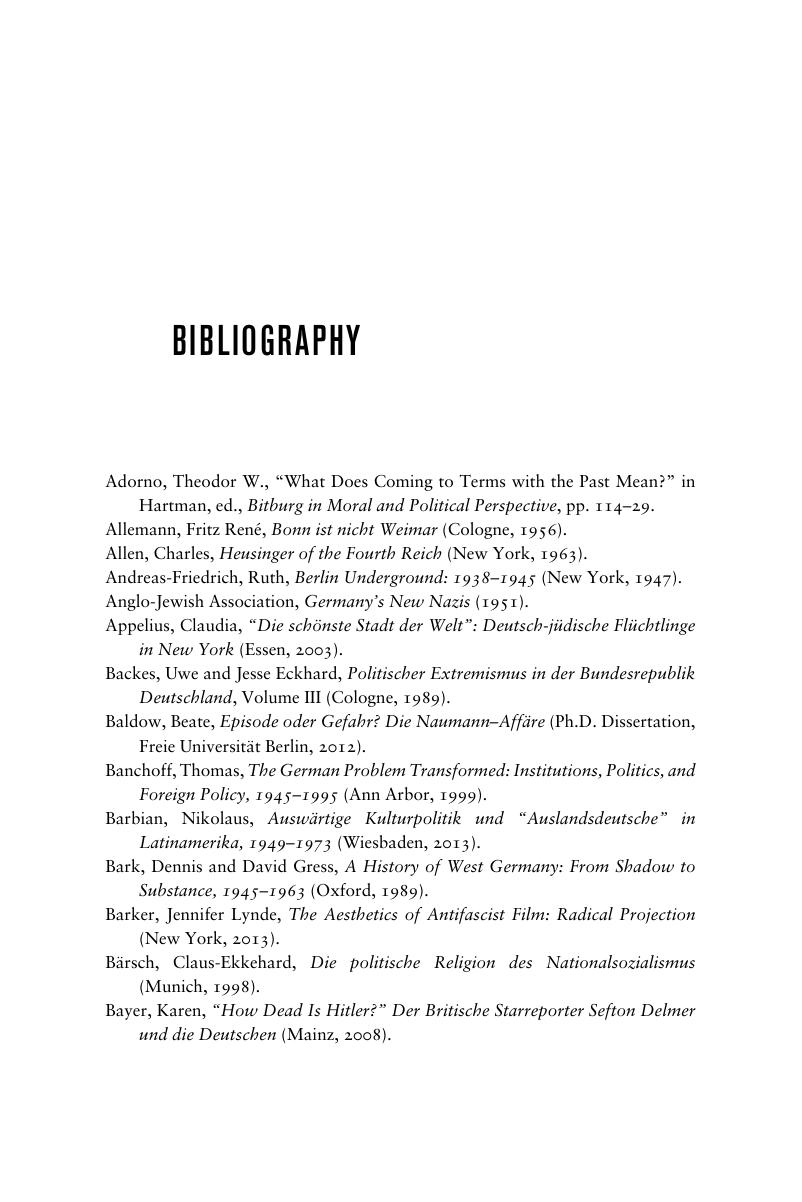Book contents
- The Fourth Reich
- The Fourth Reich
- Copyright page
- Contents
- Illustrations
- Preface
- Introduction
- 1 Between Fantasy and Nightmare: Inventing the Fourth Reich in the Third Reich
- 2 From Werewolves to Democrats: The Fourth Reich under Allied Occupation
- 3 The Fourth Reich Turns Right: Renazifying Germany in the 1950s
- 4 From Germany to the United States: Universalizing the Fourth Reich in the Turbulent 1960s
- 5 “Hitler in Argentina!”: Fictionalizing the Fourth Reich in the Long 1970s
- 6 Re-Germanizing the Fourth Reich: From Reunification to the Reich Citizens’ Movement
- Conclusion
- Acknowledgments
- Notes
- Bibliography
- Index
- References
Bibliography
Published online by Cambridge University Press: 14 March 2019
- The Fourth Reich
- The Fourth Reich
- Copyright page
- Contents
- Illustrations
- Preface
- Introduction
- 1 Between Fantasy and Nightmare: Inventing the Fourth Reich in the Third Reich
- 2 From Werewolves to Democrats: The Fourth Reich under Allied Occupation
- 3 The Fourth Reich Turns Right: Renazifying Germany in the 1950s
- 4 From Germany to the United States: Universalizing the Fourth Reich in the Turbulent 1960s
- 5 “Hitler in Argentina!”: Fictionalizing the Fourth Reich in the Long 1970s
- 6 Re-Germanizing the Fourth Reich: From Reunification to the Reich Citizens’ Movement
- Conclusion
- Acknowledgments
- Notes
- Bibliography
- Index
- References
Summary

- Type
- Chapter
- Information
- The Fourth ReichThe Specter of Nazism from World War II to the Present, pp. 371 - 391Publisher: Cambridge University PressPrint publication year: 2019



